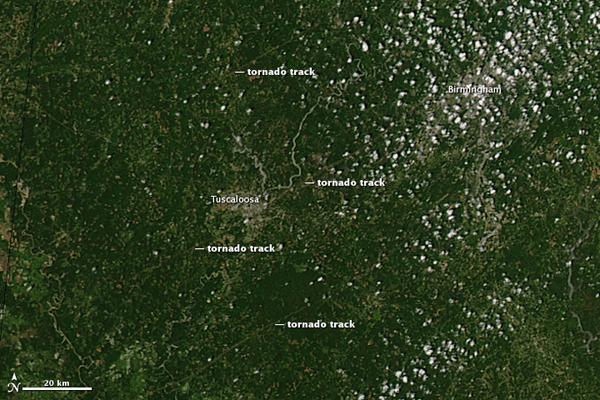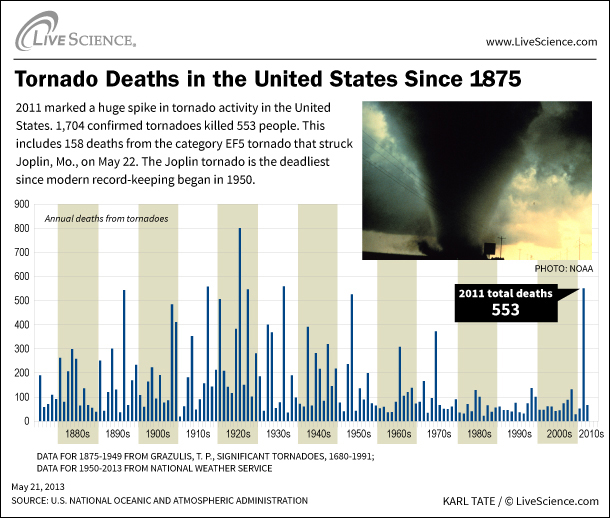
New Video Captures April's Tornado-Spawning Storms

A new video using satellite images shows the progression of the massive storm systems that spawned more than 600 tornadoes in April.
April 2011 was a month for the tornado record books . The National Oceanic and Atmospheric Administration's (NOAA) Storm Prediction Center received 875 tornado reports during that month alone; 625 have been confirmed as tornadoes so far. Many of these storms were concentrated in seven different major outbreaks, mostly in the Southern United States.
The largest of these outbreaks occurred during April 27-28, leaving more than 300 people dead as over 180 storms were reported from Texas to Virginia, with the city of Tuscaloosa, Ala., suffering devastating damage.
{brightcove CMS_LS_14699}
The new animation shows the storms that passed through these regions from April 1-30, along with the locations of each tornado they spawned during the time (symbolized as red dots). [See the new video here.]
Tornado season stayed strong past April, and is now tied for the fifth deadliest on record with 537 fatalities, making it the most lethal year for tornadoes since 1936, according to preliminary data from the Storm Prediction Center. Tornadoes also killed 537 people in 1896.
This year's season has seen historic killer tornadoes, including an EF-5 storm on the tornado damage scale that killed 151 people in Joplin, Mo., in May.
Sign up for the Live Science daily newsletter now
Get the world’s most fascinating discoveries delivered straight to your inbox.

Part of the reason this tornado season was so deadly was the number of EF-5 and EF-4 tornadoes, the highest ratings on the damage scale. The fact that several tornadoes hit populous cities straight-on also contributed to the high death toll.
The season has slowed down in June, which may be a sign that the second half of the season will be quieter. In years past, most of the tornado-related deaths happened by the middle of June, with very few deaths in the second half. Most of the post-June deaths occur in November, the so-called second tornado season.
Some of the blame for the wild tornado streak lies with La Niña, a cyclical system of trade winds that cools the waters of the equatorial Pacific Ocean. (El Niño is La Niña's warm-water counterpart.) La Niña is now gone, and neutral conditions are expected for the rest of the tornado season.










